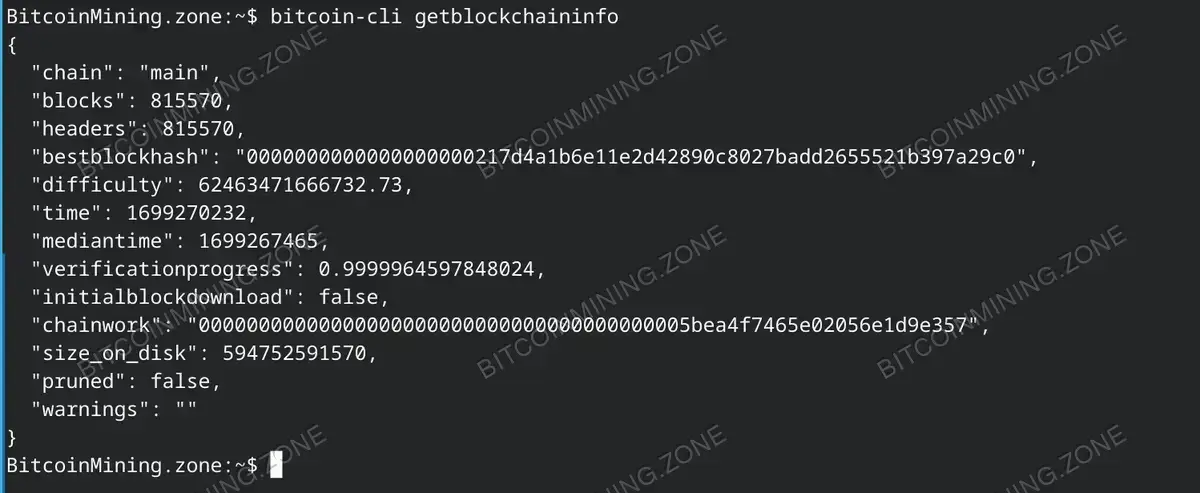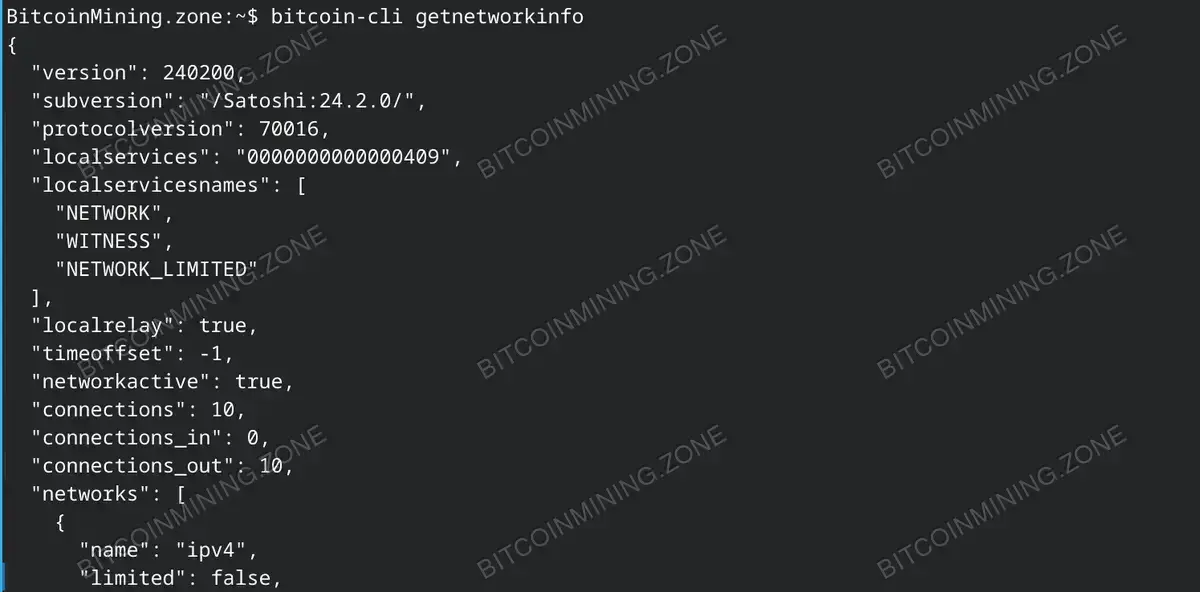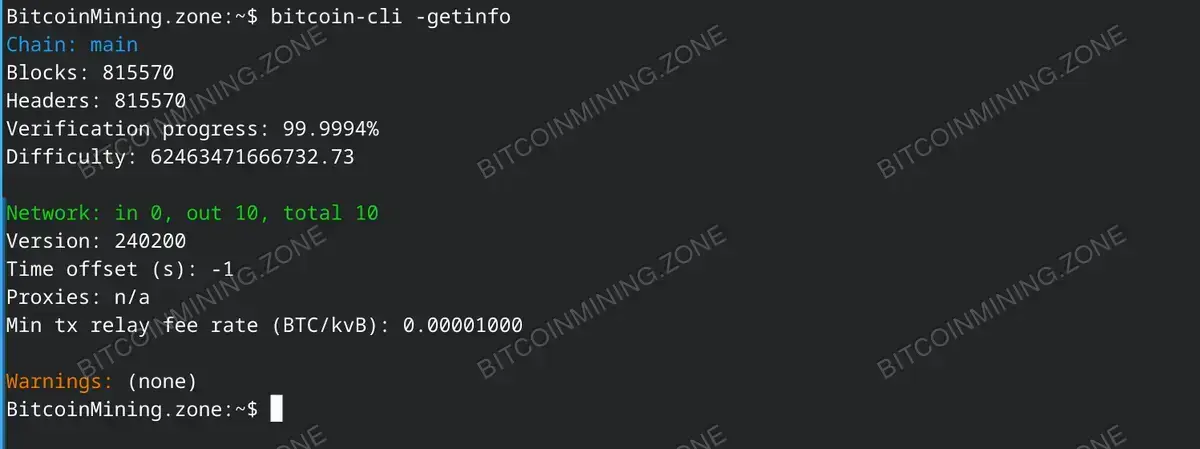Welcome to the fascinating world of Bitcoin! Having a fully synced Bitcoin Core node is a stepping stone into the next excitement, interacting with your node. This tutorial aims to introduce you to Bitcoin Core’s Remote Procedure Calls (RPCs), a command-line interface for communicating with your Bitcoin node.
Requirements:
Before we start, ensure you have the following:
- A fully synced Bitcoin Core node.
- Basic knowledge of command-line interfaces.
- Access to the Linux terminal on the machine running the node.
Understanding the bitcoin-cli Command Line Interface
Our first interaction with the command line interface starts with understanding bitcoin-cli. This command-line tool allows you to send remote procedure calls to your Bitcoin node.
Checking Your Node’s Status
Ensuring that your node is running and is in full sync with the Bitcoin network is always the first step.
- Launch your terminal.
- Input
bitcoin-cli getblockchaininfoand hit Enter.
$ bitcoin-cli getblockchaininfo

Ensuring that your node is running and is in full sync
This command displays a JSON object with information about your node’s interaction with the blockchain.
Key Fields to Note:
chain: This indicates if you’re operating on the main network (mainnet), test network (testnet), or the regtest (local testing network).blocks: Shows the number of blocks validated by your node.headers: Shows the number of block headers your node has.bestblockhash: Displays the hash of the most recently validated block.difficulty: Represents the current challenge of mining a new block.
Understanding Your Connection to the Bitcoin Network
It is crucial to guess how well connected your node is with the rest of the network.
- Enter
bitcoin-cli getnetworkinfoand press Enter.
$ bitcoin-cli getnetworkinfo

Your Connection to the Bitcoin Network
This command offers information about the status of your node’s connections within the Bitcoin network.
Key Fields to Note:
version: Indicates the version of the Bitcoin Core software running on your node.protocolversion: Indicates the version of the Bitcoin network protocol your node can interpret.connections: Represents the total number of other nodes you’re connected to.localaddresses: Shows the network addresses your node is listening on.
Ensuring Your Node is Up to Date
To maintain the health and efficiency of your Bitcoin node, it’s crucial to ensure it’s operating with the most current data and is in sync with the Bitcoin network. You can check the status of your node using two different commands: bitcoin-cli getblockchaininfo and bitcoin-cli -getinfo. While both deliver critical information, they serve slightly different purposes.
bitcoin-cli getblockchaininfo: This command gives you a detailed overview of your node’s perspective of the blockchain. The output includes information such as the current number of blocks and headers, the best block hash, difficulty, and more. It’s a comprehensive snapshot of the blockchain’s status as per your node.bitcoin-cli -getinfo: This is a more streamlined command that consolidates information from various RPCs into a user-friendly format. It provides a summary of both blockchain and networking information. You’ll see the blockchain’s current height (Blocks), your node’s verification progress to ensure it’s fully synced (Verification progress), the network difficulty (Difficulty), and a brief overview of your node’s network activity (Network).
Comparing the Commands:
When you run bitcoin-cli -getinfo, you’ll receive a concise, readable output that looks something like this:

blockchain and networking information
This output is an amalgamation of essential blockchain and networking details. On the other hand, getblockchaininfo delves into the specifics of the blockchain data that your node holds.
Verifying Block Height:
To confirm that your node is up to date with the rest of the Bitcoin network, compare the Blocks figure from the -getinfo command with the latest block height reported on a trusted Bitcoin blockchain explorer. Here’s how:
- Open your terminal.
- Type
bitcoin-cli -getinfoand press Enter. - Note the
Blocksvalue. - Visit a Bitcoin blockchain explorer like Blockchain.com or Blockchair.
- On the explorer, find the latest block height and compare it to your
Blocksvalue.
If the numbers are the same, or your node is only a few blocks behind (which can happen due to network propagation delays), your node is up to date.
With these elementary commands, you’ve made your first move into interacting with your Bitcoin full node. These tools allow you to sneak a peek into the blockchain from your node’s perspective and guarantee that everything is functioning well. Feel free to explore the bitcoin-cli command further for more functionalities. With every command, you will inch closer to understanding how Bitcoin operates under the hood.
As you continue on this journey, consider experimenting with other bitcoin-cli commands and ponder over the Bitcoin Core documentation for a thorough list of RPCs. There’s always something new to learn!
FAQ:
1. What is Bitcoin Core node?
Bitcoin Core operates as a full node that validates and relays transactions on the Bitcoin network. You can control it using RPC commands.
COMMON ERRORS AND TROUBLESHOOTING:
1. Error: Bitcoin core not fully sync.
This error occurs if the Bitcoin Node is not up-to-date with the blockchain. To fix it, retry the
bitcoin-cli getblockchaininfocommand and ensure the blocks field aligns with the current network block height.

